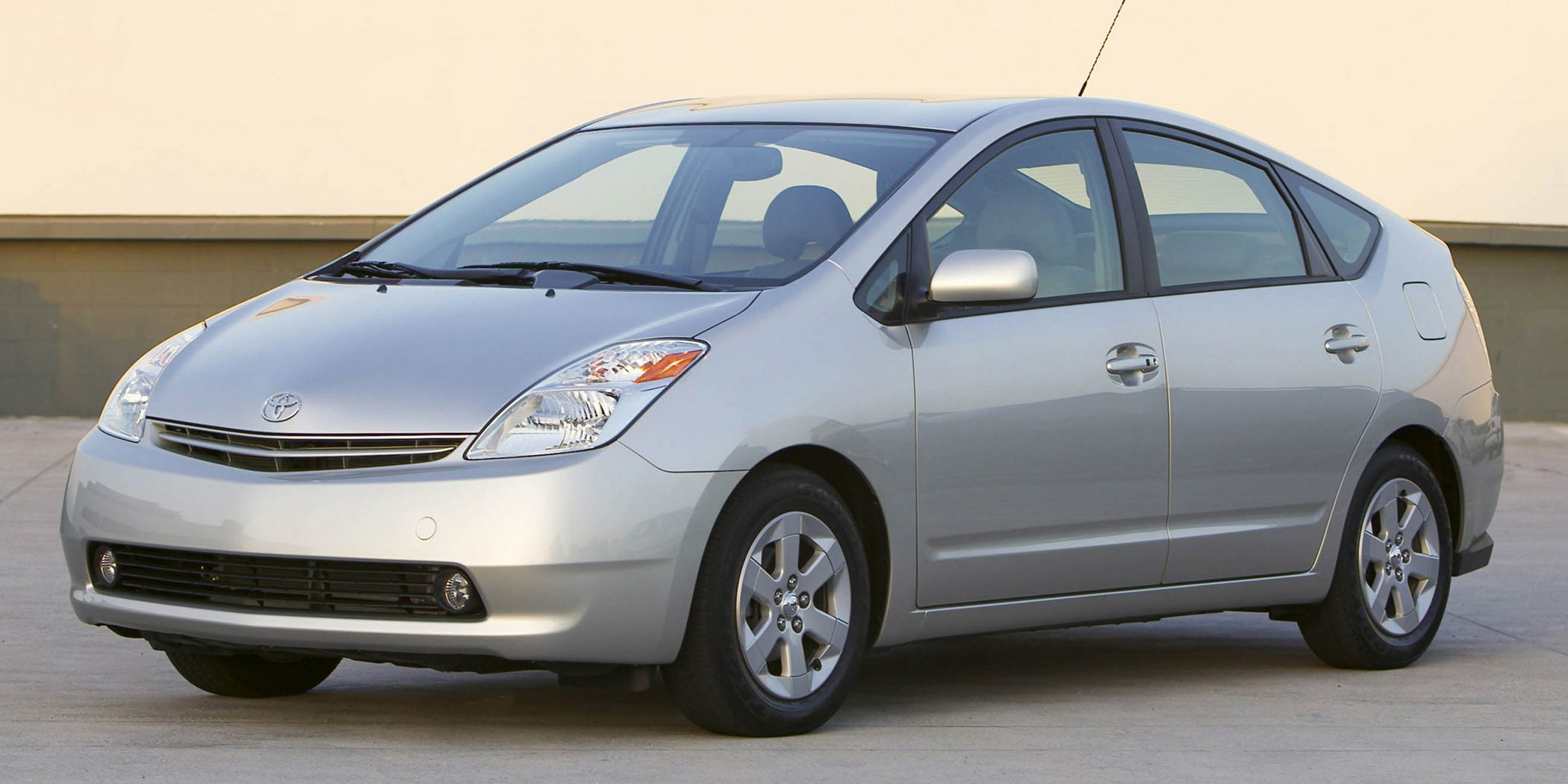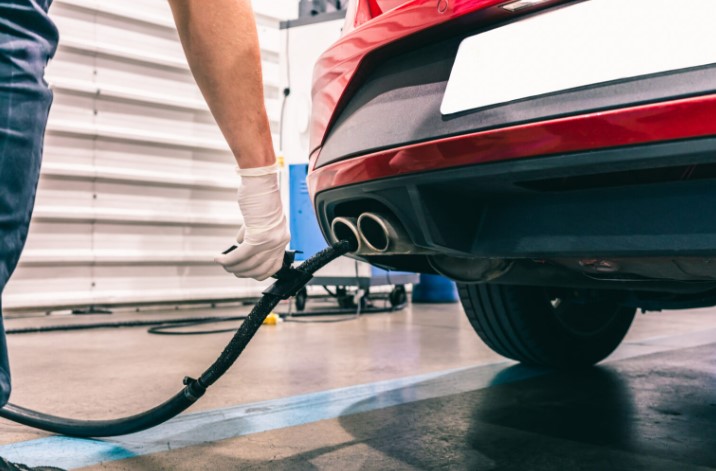Engineering Explained On The Future Of Performance Hybrids Cars And SUVs
It’s no secret that the automotive industry is rapidly pivoting towards electrification. From Tesla producing 1.3 million units in 2022 to a new era of pickup trucks launching from Ford and Rivian, electric cars are becoming the new mainstream. But some areas of the automotive sector are taking longer to adopt the new mainstream. Namely, most supercars are still primarily gasoline-powered. While there are a few outliers from the likes of Pininfarina and Rimac (the former shares its platform with the Rimac), the 2-door car sector has yet to embrace the brave new world.
1900: The Year Of The Hybrid Vehicles
Despite the hesitancy to move directly to a full-blown electric propulsion system, many supercar manufacturers are testing the waters with forms of hybridization. While employing hybrid powertrains to boost performance, rather than efficiency, is a relatively new concept, these integrated powertrains have been around for an extensive period. In 1900, Ferdinand Porsche unveiled a prototype called the Lohner-Porsche Semper Vivus (the model name ‘Semper Vivus’ is Latin for ‘always alive’), the first-ever hybrid vehicle. Its powertrain was home to a small internal combustion engine that supplied power to a lead-acid battery pack, powering the front wheels via hub motors.
While the Semper Vivus was a fascinating concept of its time, pure internal combustion engine cars eventually took hold of the market, and hybrid research and development dwindled. That was until nearly one hundred years later when Toyota and Honda released their respective Prius and Insight models (Though the Prius was a far more successful vehicle). Both of these vehicles, launching in the late 1990s, were efficiency trailblazers, delivering impressive fuel economy ratings at relatively affordable price points.
The Toyota Prius: Uncool, But Economical
For example, the Toyota Prius’s powertrain consists of an internal combustion engine, a high-voltage battery, and an electric motor. Unlike an electric car, a hybrid car’s battery is relatively small, usually around 1 or 2 kWh, but its goal is dramatically increasing efficiency. When slowing down, the electric motors can transfer kinetic energy from its motion into electricity stored in the battery pack. This process, called regenerative braking harvests energy that the brakes would dissipate as heat.
Once the energy is contained within the battery, most hybrids can operate in electric-only driving modes at low speeds. With a small battery, their electric range is minimal (usually around 1 or 2 miles). But efficiency is the goal, so the electric motors and battery can completely propel the car, assist the engine in acceleration, and allow the engine to turn off, saving fuel. This enables vehicles like the 2004 Toyota Prius to achieve a commendable EPA rating of 46 combined mpg, far above the national average of 19.6 for the same year.
An Unintended Benefit From EV Car Technology
A byproduct of having electric motors onboard allows for improved acceleration thanks to their ability to produce maximum torque at zero rpm. This performance benefit allows them to have an upper hand over non-hybrid vehicles. “To me, the biggest real advantage is throttle response,” says Jason Fenske, best known by his moniker, Engineering Explained. “There are other benefits of course, more torque, more efficiency, but to me, responsiveness is the coolest.” In spite of the numerous merits of hybrids, early hybrids like the Prius primarily excelled in the fuel consumption category, but with around 110 horsepower, there just wasn’t any opportunity to derive any admirable performance figures.
Most of these early hybrids weren’t particularly quick, and worse, the American general public didn’t seem to understand how hybrids functioned. The 2008 “Hybrid Attitude Survey” revealed that consumers thought hybrids could not travel long distances. “Major obstacles to purchasing a hybrid vehicle include perceptions that they not only cost more, but are harder to maintain and are not practical for long-distance driving,” (Ruder Finn Insights). To deconstruct one of these arguments, take the trusty Toyota Prius referenced earlier. For the 2008 model year, the Prius had a 547 miles range, whereas the Corolla could only go 407 miles, yet the Corolla utilized an 11{64d42ef84185fe650eef13e078a399812999bbd8b8ee84343ab535e62a252847} larger fuel tank.
Several years later, Silicon Valley-based startup Tesla Motors rose to the forefront of the industry with its Model S sedan. The Model S proved pure electric cars could deliver unparalleled reliability, power, and range. By 2016, the top-spec Model S was able to produce 762 horsepower. “Performance, realistically, is very difficult to compete with. There’s a Bugatti Chiron and it can do insane things, but you can put that next to a Lucid or a Tesla and it’ll match it, and you’re like ‘dang, that’s a 30th of the price.’ There’s such a huge performance advantage to doing it that it’s hard to ignore,” Fenske told HotCars.
Hybrid Technology For All Cars Is The Automotive Direction
Despite coming from a startup, legacy automakers were taking note of the advancements in EV tech. While very few delivered truly compelling electric cars, there was an influx of hybrid entries coming from notable European automakers. Some early examples included the Porsche Panamera S Hybrid, BMW ActiveHybrid 3, and the BMW i8 Plug-in Hybrid. But where the real achievements were happening was the industry’s pinnacle with three hybrid hypercars: the Ferrari LaFerrari, McLaren P1, Porsche 918 Spyder. While adorned with high six to seven figure prices, these vehicles served as halo cars and pioneered innovative performance technology.
Later on, less expensive entries eventually launched, like the Acura NSX, McLaren Artura, and the Corvette E-Ray. But besides the benefit of electric motors assisting in low-speed and low-RPM acceleration boosts, they can provide an even greater performance benefit: continuing the torque when shifting. “For example with the Acura NSX, one of the things Acura states is that you never lose positive torque. It’s a DCT (Dual Clutch Transmission) for the rear wheels and the front wheels are only powered by electric motors— and they never let up,” Fenske added.
“So as you’re accelerating and shifting through the gears, those front motors are still accelerating, so you always have positive torque. That’s another cool benefit that you get because you’re using a single gear ratio rather than switching gears,” Fenske said. When observing electric versus gasoline drag races, the most intriguing aspects are the points at which the internal combustion engine car has to shift gears. This leaves an opportunity for the EV to pull ahead thanks to the lack of a multi-speed gearbox. It’s just power traveling directly to the wheels.
Hybrid Is A Perfect Combination Of Efficiency And Performance
This ability to maintain power while shifting is just one of the several performance benefits though. Since many high-performance cars utilize turbocharged engines, the lag of waiting for the turbo to spool up can create a detached driving experience. Hybrids can eliminate this. “When they’re paired together, it’s really cool because the electric motor fills the gap in waiting for the turbo to spool up. That is really special and allows you to have a much more connected driving feel, which wins in my opinion,” Fenske told HotCars. With a lessened gap during shift points and a more responsive accelerator pedal, hybrid powertrains can deliver a much more engaging driving experience.
“The most important thing for me in a good driver’s car is just responsiveness in all of the elements that you touch, so the brake pedal, the throttle pedal, and the steering paddle shifters. For throttle, EV is the best because the potential for the quickest reaction is there; it doesn’t necessarily mean it will be there that way based on how it’s tuned, but for sure, versus a turbocharged engine, it will always be faster,” Fenske said. By mating an internal combustion engine powertrain to an EV system, the result yields a product that combines the best aspects of both into one package.
Besides acceleration, the ability for hybrids to regen also yields some remarkable benefits. When braking in a traditional car, all the energy from the brake pad friction goes straight to local environment via heat. Besides all the wasted energy, brake pads will start to wear over time. For cars of performance-oriented habitats, like those taken to the track occasionally, the typical 50,000-mile pad life will be significantly reduced. But hybrid powertrains can help extend brake pad wear life by diverting a significant portion of that energy to the battery pack.
Regening on the track not only means longer brake life, but the brakes won’t overheat as quickly because they aren’t in use to the same extent. “If you’re out on a track day, you’re going to get more power and go further, by taking in some of that energy, rather than throwing it all at the brakes. So from an endurance standpoint, if the heat all works out, it means you’ll stay out longer and complete more laps,” Fenske told HotCars.
With virtually every automaker offering hybridized variants of their vehicles, it was only a matter of time before these powertrains would migrate into performance cars. Compared to earlier hybrids, this technology has progressed so far that now cars can excel not only in efficiency, but also in performance, while priced similarly to their non-hybrid counterparts. From regenerative braking to improved acceleration, driving a hybrid is no longer a signal of moral correctness; driving one is far more compelling than a conventional car. “From a personal fun standpoint, you save fuel economy, you save some brakes, and you can stay out on the track a little longer,” Fenske said.













